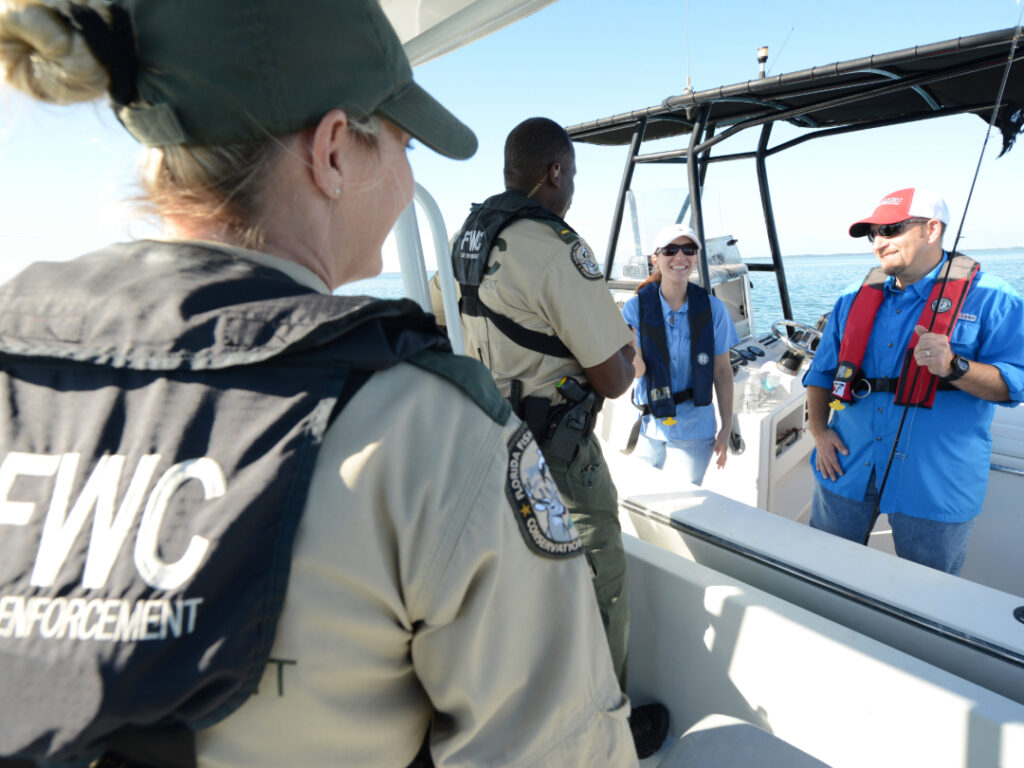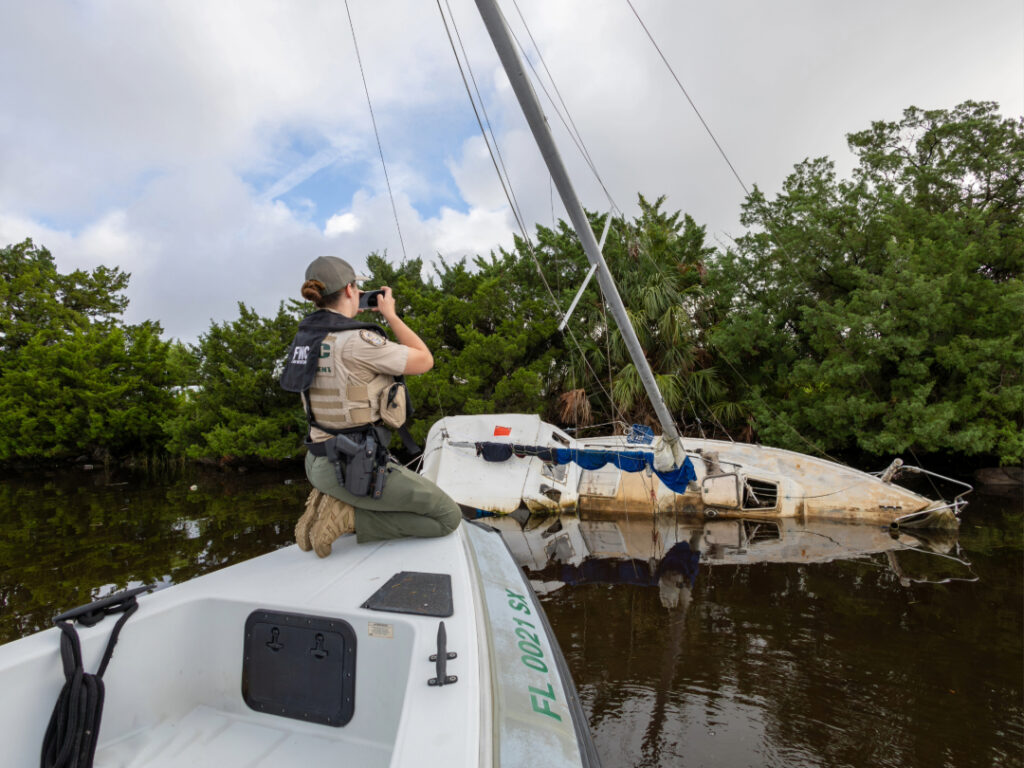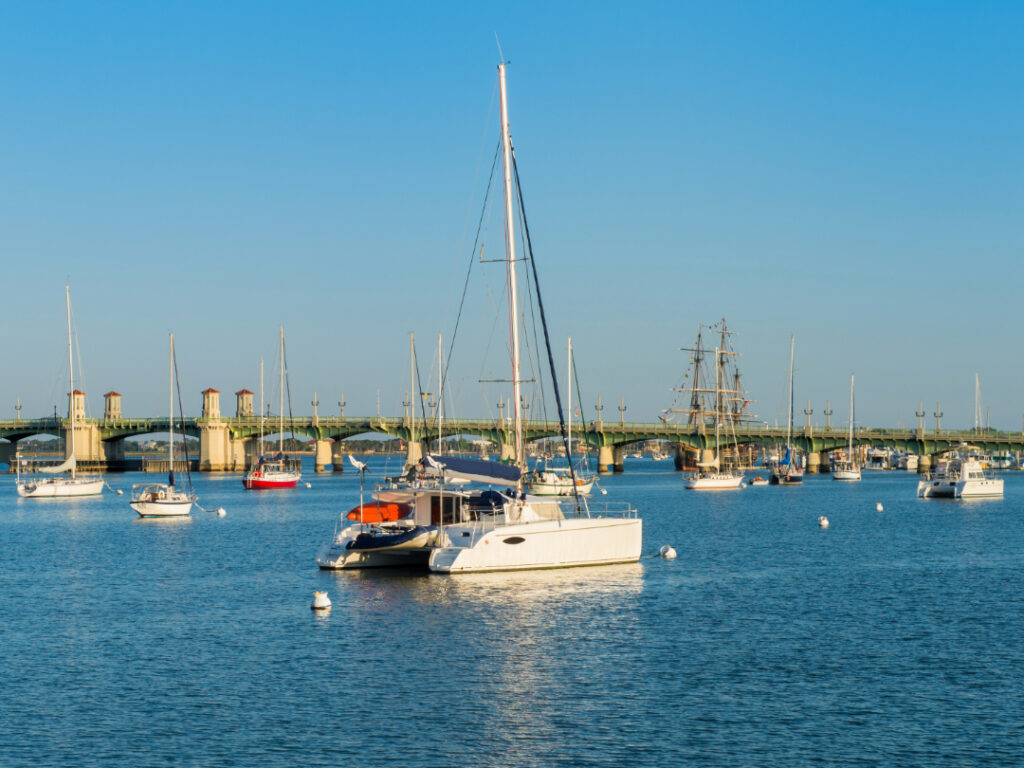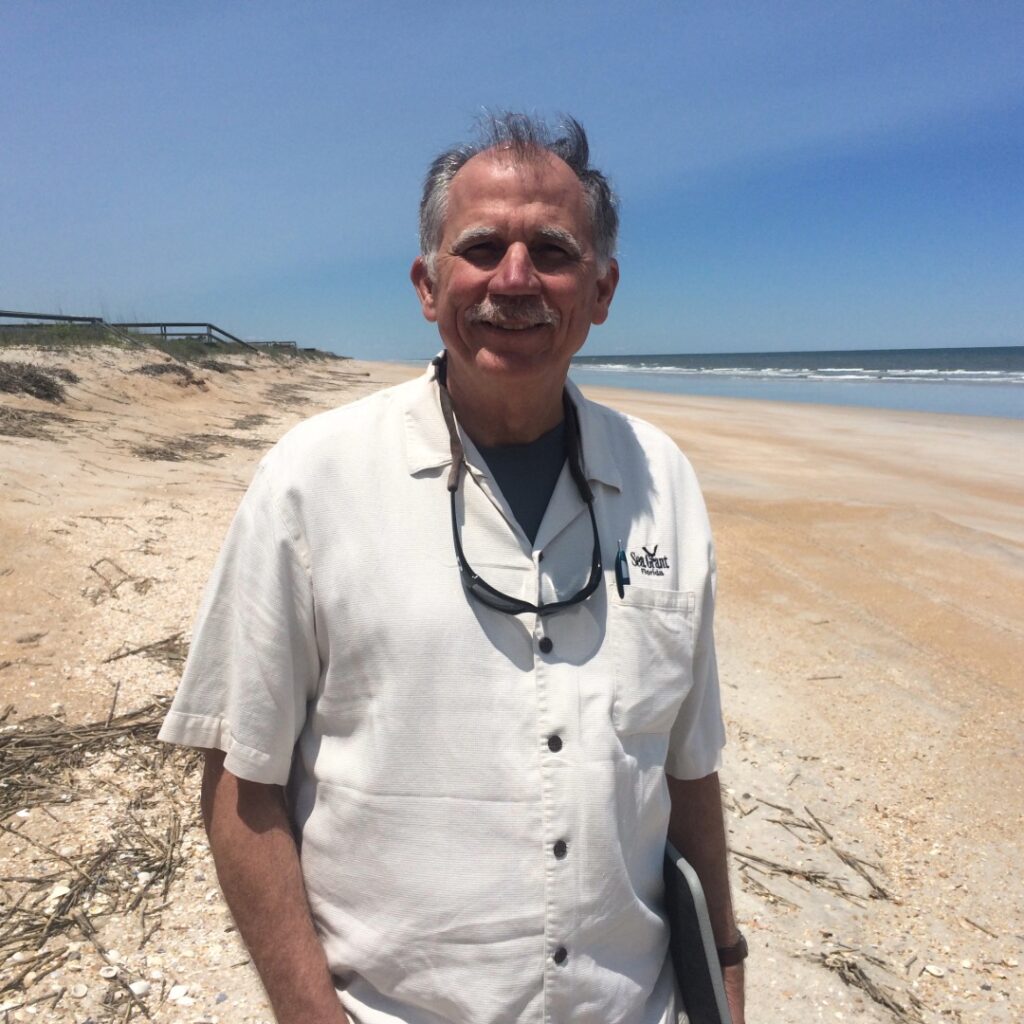Florida’s boaters and waterways received considerable attention in the 2025 legislative session. The most significant of these is SB 1388, a wide-ranging bill that addresses vessel stops, safety and marine sanitation enforcement, vessel energy source regulation, and springs protection. Other bills of interest include SB 164 and HB 481, which tackle the long simmering issue of long-term anchoring in increasingly crowded waterways and preemptive approaches to vessels at risk of becoming derelict. Finally, HB 735 expands Florida’s popular clean marina program to include marine manufacturers; it also provides communities with additional opportunities for water access funding through grant programs administered by the Florida Fish and Wildlife Conservation Commission (FWCC). These reforms all amend Chapter 327 of the Florida Statutes, which, along with Chapter 328, serve as the primary legal framework for regulating Florida’s boating and waterways.
CS/SB 1388: Vessels
A priority of the Governor, SB 1388 (signed into law as Ch. 2025-35) expands the rights of Florida boaters. It limits the ability of law enforcement officers to stop a vessel and inspect it for adequate safety and marine sanitation equipment. The new law also prohibits both the state and local governments from regulating vessels based on the energy source that propels them. Additionally, it sets a higher bar for designating springs protection zones and provides more nuanced authority to regulate boating activity in those zones, instead of simply prohibiting it.

Florida Fish and Wildlife Conservation Commission law enforcement officers on patrol; boating safety check. Photo by FWC.
Safety Stops
Section 2 of the new law modifies Section 327.56, F.S., entitled Safety and Marine Sanitation Equipment Inspections. Previously, an officer could randomly stop any vessel to perform a safety and marine sanitation equipment inspection. These were informally referred to as “safety stops.” If the owner or operator of the vessel did not then voluntarily consent to an inspection, the officer could board the vessel and conduct the safety inspection if:
(1) The officer had “probable cause or knowledge” that a violation of Chapter 327 F.S. occurred or was occurring;
(2) The owner/operator refused or was unable to display requisite safety or marine sanitation equipment; or
(3) The equipment to be inspected was only visible while aboard the vessel.
Now, under the new 2025 amendments, an officer may not stop or board a vessel if it is for the sole purpose of performing a safety or marine sanitation equipment inspection. Instead, the officer must first have probable cause that a separate violation of Chapter 327 F.S. (titled Vessel Safety), occurred or is occurring. The new law makes violations of both safety and marine sanitation equipment requirements a “secondary offense.” To illustrate what this means, an officer must first have probable cause that a “primary offense,” such as boating under the influence of drugs or alcohol (BUI), has occurred or is occurring before stopping or boarding a vessel. Only then can the officer perform a safety or marine sanitation equipment inspection and issue a citation based upon that inspection. This is analogous to the motor vehicle law which makes driving while talking on the cell phone a secondary offense. The officer must first pull the driver over for a primary offense such as reckless driving, before he or she can issue a citation for cell phone use. The new law does not affect the United States Coast Guard, which can still perform random stops and inspections, a practice which has been upheld by the United States Supreme Court.
Vessel Safety Decal Program
Section 3 of the Bill revises the State’s current boater safety decal program under Section 327.70, F.S. and renames it the “Florida Freedom Boater” safety decal program. Under this revised program, the State Department of Highway Safety and Motor Vehicles will issue “Florida Freedom Boater” decals at the time of vessel registration or renewal to vessel owners whose vessel meets “safety carriage and use” requirements of Chapter 327, F.S (emphasis added). The term “safety carriage and use” is not defined in Florida law but Section 327.50, F.S. addresses boating safety equipment requirements by incorporating U.S. Coast Guard safety regulations. In addition, the same section includes several specific vessel safety “use” requirements, including that children under 6 years of age must wear life preservers. Marine sanitation equipment is not mentioned in Section 3’s authorizing language, suggesting it is not included in the decal program.
As before, FWCC may develop a rule establishing the time frame the decal’s validity, which can be no less than 1 and no more than 5 years, but no additional rulemaking authority is conferred. FWCC’s current rule makes the decal valid for one year. The decal must be displayed above the waterline within 6 inches of the vessel registration decal. Non-motorized vessels under 16’, which are not required to be registered, must place the decal above the water line on the forward half of the port side of the vessel. It is not clear when or how these vessels receive their decals since they do not have to be registered.
The statute does not explicitly state that vessel owners are required to have a decal, but the legal implications of not having one may be significant. According to the law, vessels displaying a decal acquired at the time of registration or renewal are “deemed” to comply with the safety carriage and use laws in Chapter 327 F.S. The new law does not indicate for how long after vessel registration or renewal the vessel remains “deemed compliant,” after it has been affixed. However, since the decal covers the “use” as well as the carriage of safety equipment, it could be as long as the duration that FWC sets for the decal’s validity. This may mean, as a matter of statutory interpretation, that a decaled vessel may be considered compliant, even when it is not. The use of the term “deemed” in the law is often regarded as conclusory, even when it is counter-factual.
As noted above, FWCC already had a safety equipment carriage and use decal program. Under the prior law, the decals were issued on the water – after vessel safety stops and inspections. Even then, an officer was still allowed to stop a decaled vessel to ensure compliance with the safety carriage equipment and use requirement provided that the officer had “reasonable suspicion” that a violation of the safety requirement occurred or was occurring (note: under the law, reasonable suspicion is a lesser standard than probable cause). Thus, the prior decal program did not end safety stops for decaled vessels, but it did require an officer to have a legal basis for the stop, thus preventing random stops.
In practical terms, and depending on how long the assumption of compliance lasts after the decal is affixed, the new Florida Freedom Decal Program may further narrow the ability of an officer to cite vessels for safety carriage and use violations. For example, it may mean that an officer may not stop a boater whose children are not wearing life preservers – as required by Section 327.50(1)(b) F.S., -unless the officer has probable cause to believe another “primary” law, such as BUI, is being violated. And, while it is not entirely clear, it may also be possible that if an officer stops a decaled boat for a primary violation like BUI, the officer cannot then charge the boater for any secondary violation of a safety equipment carriage and use regulation, even when that violation is present, since the decal may be considered to be conclusive of compliance. In other words if a vessel was “deemed” to be in compliance at the time of registration and renewal, it may continue to be deemed so under the law.
The lack of clarity stems in part from the change in when the decal is issued. Under the old law, it was issued on the water after a safety stop – where equipment carriage and use could be observed in real time. Under the new law, it is at the “time of registration and renewal.” This might make some sense were it referring only to safety equipment carriage. But the statute refers to safety equipment “use” as well. It is difficult to see how compliance with safety equipment “use” could be demonstrated at the time of registration and renewal, especially given that both can be accomplished by mail or on-line. To implement this provision of the new law, which went into effect on July 1, 2025, and to avoid boats being trailered to a physical location, FWCC will authorize boat owners to sign and include an “attestation,”form with their registration or renewal, attesting to the fact that the boat being registered is compliant. FWC recently published a Florida Freedom Boater Decal FAQ page on its website. https://myfwc.com/boating/regulations/freedom-boater-faqs/
As noted, FWCC’s authority to further interpret the law through rulemaking appears to be limited . Ultimately, it will be up to the courts and/or the legislature in a subsequent legislative session to clarify the legislative intent behind the Program amendments.
Vessel Energy Source Regulation
Section 4 of the Bill creates new section 327.75, titled the “Florida Watercraft Energy Source Freedom Act”. This part of the Bill prohibits state agencies (including FWCC and the Florida Department of Environmental Protection), local governments (counties and municipalities), and “governmental entities” (such as special districts, including navigation districts) – notwithstanding any law to the contrary – from restricting “the sale or use of watercraft based on the energy source used to power the watercraft” (emphasis added). “Watercraft” is broadly defined to include “any vessel or craft designed for navigation on water, including boats and personal watercraft.” “Energy source” is defined as “any source of energy used to power a watercraft, including, but not limited to, gasoline, diesel fuel, electricity, hydrogen and solar power.” (emphasis added). The term “including, but not limited to” may be important, as it could also mean “human-power” – such as paddling or rowing. Human-powered vessels are defined in Chapter 327 to include vessels “powered only by the occupants’ hands or feet, oars, or paddles.”
As with the section addressing vessel stops, the full ramifications of this section of the new law remain uncertain. Notably, HB 1388 does not restrict regulation of the means of propulsion (e.g. propellor, sail or paddle), or the speed at which vessels navigate- only the energy source that propels the vessel (fossil fuel, electricity, wind and presumably human power). Under Section 327.46, Florida Statutes, FWCC and local governments (in most cases subject to FWCC approval), can create “boating restricted areas,” including “vessel exclusion” zones,” , for limited purposes, including public safety, seagrass protection on privately owned submerged lands, Manatee protection, mooring fields and anchoring limitation areas. Most restrictions on boating in Florida waters regulate vessel speed (e.g. minimum wake, no wake zones). Nonetheless, boating restricted areas can and sometimes do regulate certain vessel types differently, and energy source can be one way that occurs. A case in point is the FWCC rule implementing the statutory protection accorded seagrasses on privately owned submerged lands:
68D-24.004 Private Submerged Land Seagrass Protection Boating Restricted Areas.
(c) “External propeller limitation zone” means a boating restricted area in which all vessels equipped with both an internal combustion motor (e.g. gasoline or diesel motors) and one or more propellers in the water for propulsion must turn off the internal combustion motor and, if possible to do so, tilt or raise the propeller out of the water. Vessels propelled solely by polling, paddling, floating, electric motors, or internal combustion motors without an external propeller may proceed through the zone with no restrictions.
Section 327.46(1)(c)(3)(a), F.S. also specifically authorizes local governments- with FWCC approval- to create vessel exclusion zones limited to canoes or other vessels under oars or sail. These effectively exclude vessels using other energy sources. Because the new statute prefaces its substantive requirement with the term “notwithstanding any other law,” these zones would seemingly be disallowed under the new law since they restrict vessel use based on energy sources.
Even further, under Article X., Section 11 of the Florida Constitution (Sovereignty Lands) and Chapter 253, F.S. (State Lands), the Governor and Cabinet have ultimate responsibility for state-owned submerged lands and the “products thereon” such as sea grass, coral, shellfish, etc. This includes managed areas such as State Parks and Aquatic Preserves. In some cases, the State excludes or differentiates vessels to create canoe trails, swimming areas, “pole and troll” zones, and wildlife protection zones, based on an approved management plan. To the extent any of these zones allow one type of energy source (e.g. human power or electric trolling motor) while restricting another (internal combustion engine), it may run contrary to the intent of the new law.
Since the new statute prefaces its substantive requirement with the term “notwithstanding any other law,” this could call into question the validity of any zones where energy source serves as the basis for vessel restrictions – even when these have been authorized by another statute of otherwise equal legal weight. The new law does not include a provision expressly providing for either grandfathering or only prospective application. Therefore, existing zones that fall under the new statute’s purview may very well be invalid .
Springs Protection Zones
Section 1 of the Bill amends Section 327.45, F.S. (Protection Zones for Springs), which authorizes FWCC to create protection zones for Florida’s springs and spring groups. Previously, these protection zones could restrict vessel speed and operation, and prohibit (but not modify) vessel anchoring, mooring, beaching, or grounding. As Florida’s boating population has grown, vessel impacts to springs have become increasingly apparent in boat-accessible springs. With these increased vessel impacts in mind, the new amendment offers greater flexibility to FWCC by permitting the agency to “modify” the “allowable means” of vessel anchoring, mooring, beaching, or grounding, in addition to prohibiting these practices. At the same time, the statute raises the standard that FWCC must meet to create protection zones under F.S. 327.45: Rather than simply identifying a “harm” that vessels pose to a spring or spring group, the “harm” now must be “significant.” To be considered “significant,” the “harm” must be the “predominant cause of negative impacts.”

Derelict vessel. FWC Photo by Ashley Williams
CS/SB 164: Vessel Accountability
Passed unanimously through both houses, SB 164 (signed into law as Chapter 2025-147, Laws of Florida) continues the State’s longstanding efforts to crack down on derelict vessels littering the State’s waters and accelerates a trend toward addressing the issue before a vessel becomes derelict, which began in 2016 with the creation of a new category of vessels known as “at-risk” vessels. Among other listed risk factors, vessels that do not have an “effective means of propulsion” are considered to be at-risk of becoming derelict under F.S. 327.4107.
Section 2 of the new law amends F.S. 327.4107 to clarify the circumstances under which an officer may require the rule-based test for “effective means of propulsion,” including the ability to immediately impose the test if the vessel owner or operator is on board. If the owner or operator is not on board, the statute shortens the time within which the owner or operator must conduct the test from 72 to 48 hours after notice is received from the officer.
Section 4 of the Bill does amend 327.70, F.S. (Enforcement) by extending the timeframe from 18 months to 24 months in which a vessel found to be at-risk three or more times will be declared a public nuisance. Under Section 327.70, F.S., at-risk vessels declared to be a public nuisance may be relocated or removed from state waters, and the law enforcement officer and agency conducting the relocation or removal are insulated from liability for damage associated with the relocation or removal, unless the damages arise from gross negligence or willful misconduct.
Perhaps, the most significant aspect of SB 164 is Section 3, which creates F.S. 327.4111 (Long-Term Anchoring). As its title implies, this section imposes new requirements for “long-term anchoring” in state waters, effectively ending the State’s longstanding laissez faire attitude toward anchoring, an approach some argue has contributed to the proliferation of derelict vessels. Section 3 of the new law creates new subsection 327.4111 entitled “long-term anchoring.” Long-term anchoring is defined as the anchoring of a vessel “within 1 linear nautical mile of a documented anchorage point for 14 days or more within a 30-day period.”
The new law neither prohibits nor restricts long-term anchoring. Instead, it creates a permit-based tracking system, giving FWCC a means to monitor vessels that remain stationary for extended periods of time, which experience has shown are often the most likely to become at-risk or derelict. Vessel owners or operators seeking long-term anchorage must apply for a permit (there is no fee for the permit), which expires after one year, and can be updated or renewed. The permit requires the sort of ownership and vessel information that a law enforcement officer would need to track down the owner or operator should the vessel present problems, such as becoming at-risk or derelict, along with the location of the vessel. Any single owner or operator may have permits for more than one vessel but must seek a new permit for each new long-term anchorage by any vessel. Vessels which become derelict, at-risk (and presumably remain at risk), or violate the State’s marine sanitation laws may have their permits revoked. A person who engages in long-term anchoring without a valid permit commits a non-criminal violation, enforced with a uniform boating citation.
One consequence of the new permit system is that it seemingly implicitly authorizes the long-term storage of unoccupied vessels (stored vessels) on state submerged lands outside of the managed confines of docks, marinas, mooring fields, and, most recently, anchorage limitation areas. Prolonged unoccupied vessel storage on waters of the state has been questioned because it effectively preempts the state-owned submerged lands over which the vessel lies at no cost to the vessel owner (unlike a mooring field or marina), creates potential problems for other vessels and shoreline infrastructure during storms, and can lead to the proliferation of at-risk and derelict vessels.
The statute authorizes, but does not require, FWCC to engage in rulemaking to flesh out the statute. In doing so, the agency may need to define “documented anchorage point” for purposes of starting the clock, lest pulling anchor and moving a few feet starts a new clock, circumventing to some extent the law’s intent. Riparian rights of shoreside landowners will also have to be considered.
Section 7 of the new law also revises F.S. 823.11 (Derelict Vessels; Relocation or Removal; Penalty) by expanding the Florida FWCC’s existing local government grant program to support the derelict vessel prevention and voluntary turn-in program.

Anchored boats in St. Augstine.
CS/CS/HB 481: Anchoring Limitation Areas (Ch. 2025-39, Laws of Florida)
While the Legislature was bringing long-term anchoring under statewide regulation for the first time, it also conferred new authority on the State’s most populous counties and their municipalities, to regulate anchoring within their respective jurisdictions. Under current law (Section 327.60(2), F.S.), local governments are preempted from regulating anchoring in state waters within their jurisdiction, except in the case of “live-aboards,” floating structures, and commercial vessels other than commercial fishing vessels. This longstanding preemption has been a flashpoint from time to time as local governments must deal with congested waterways, and some of the public health, safety and welfare issues that come with anchored boat aggregations near their shores . It has become particularly problematic in Southeast Florida, resulting in a series of ad hoc legislative declarations of site-specific anchoring limitation areas set forth in Section 327.4108(1), F.S. In 2021, following an earlier “pilot program” that authorized local regulation of anchoring in jurisdictions that installed mooring fields, the Legislature made its first permanent foray into returning regulatory authority to local governments by allowing counties to seek authorization from FWCC to create Anchoring Limitation Areas (“ALA’s”) under certain conditions. Municipalities were required to work through counties to establish these. The framework for these county-created ALAs is set forth in Section 327.4108(2), F.S. (note that Monroe County is subject to a separate, distinctive ALA legislative scheme per Section 327.4108(3), F.S.).
In the 2025 session, the Legislature returned to the ALA issue, amending Section 327.60(2) to create an additional exception to the general preemption on local regulation of anchoring. Under the new law, local governments in counties with a population of 1.5 million may now directly regulate anchoring, without going through the Statewide FWCC/County ALA process. Presently, this means Dade, Broward, Palm Beach, Hillsborough and, curiously, Orange Counties. These counties and their municipalities can now enact ordinances restricting vessels anchored within such counties “for a period of 1 hour or more between one-half hour after sunset and one-half hour before sunrise for more than 30 days in any six-month period.” Vessels in marked mooring fields and vessels completing permitted marine construction, installation, or maintenance work are exempt.
HB 735 — Water Access Facilities
In addition to addressing issues on the water, access to the water also received attention in the 2025 legislature. HB 735, signed by the Governor, amends Section 327.0346, F.S. (Lease of Sovereign Submerged Lands for Marina, Boatyards, Mooring Fields, and Marine Manufacturers and Retailers). This Bill authorizes the State’s popular “Clean Marina” Program to include “Clean Marine Manufacturers.” As a result, any facility leasing sovereign submerged lands that receives and maintains a “Clean Marine Manufacturer” designation from FDEP – like Clean Marinas, Boatyards and Marine Retailers – is eligible for a 10% discount on its lease fees.
The Bill also amends F.S. 327.47 (Competitive Grant Programs), which authorizes competitive grant funds for public marine construction projects and boating programs. The Bill extends the uses eligible for these grant funds to “construction and maintenance of publicly owned parking for boat-hauling vehicles and trailers.” Parking at and near boat ramps has been and remains a scarce resource, so allocating funds to expand opportunities to create more such parking will be welcomed by local governments.
Closing Thoughts
2025 turned out to be a busy year for boating law in Florida, with significant changes to how the State’s boating community and its waterways are regulated and managed. Boaters have been further freed from the prospect of random safety stops by state and local law enforcement, even as the number of boating accidents and fatalities jumped in 2024 according to a recent FWCC report. The increasing pressure of a rapidly growing population and vessel registration (the most in the country), abundant protected waters, and a year-round boating friendly climate has resulted in an increasing need to manage the State’s waterways. As with any new laws, these will have to be interpreted by the agencies that administer them, tested in practice and then addressed by courts to understand their full impact.
About The BLOGGER

Thomas T. Ankersen is an emeritus professor from the University of Florida Levin College of Law and Director Emeritus of the Florida Sea Grant Legal Program. At the College of law, he founded and directed the Conservation Clinic, an experiential learning program providing students with opportunities to engage in the practice of law and public policy. Much of the Clinic’s work over the years supported the Florida Sea Grant extension community through applied research and policy development. Ankersen remains involved with the Florida Sea Grant community and its constituents across a range of matters, working with non-profit organizations and local governments to address current and looming challenges in the marine and coastal environment.